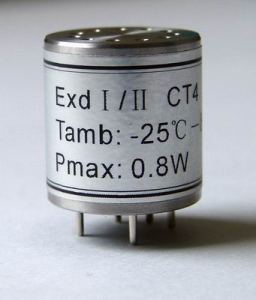A device that delivers dependable and steady power to the lasers incorporated in gas sensors can enable more precise analysis of trace atmospheric gases. The Pacific Northwest National Laboratory (PNNL) of the Department of Energy developed a device known as the low noise current controller. The controller, licensed by Wavelength Electronics in Bozeman, Montana, provides steady power to sensors that utilize quantum cascade laser for analyzing minute concentrations of gas.
Laser-enabled sensors are used by scientists frequently for analyzing concentrations of atmospheric gases. Air at sites of concern, like high altitudes from airplanes or at the ground in the vicinity of power plants, are sampled by researchers for atmospheric gas concentration analysis. A laser is then directed through this air sample by a sensor instrument. Scientists are able to find out the particular gas present, along with its concentration, depending on the amount of laser light absorbed by the sample.
 Wavelenght Infrared carbon dioxide gas analyzer
Wavelenght Infrared carbon dioxide gas analyzer
However, minute concentrations of particular gases are difficult to analyze, especially when random fluctuations or noises are present in the line width and wavelength of a laser, preventing researchers to make precise readings. A low noise controller was developed by scientists from PNNL to solve this problem.
The noise present in the power source is reduced by this controller, enabling scientists to detect the minute trace gases. . This controller, the lowest noise controller available in the market, was particularly designed for accommodating extra-sensitive sensors that utilize quantum cascade lasers (QCLs). The QCL based sensors are able to emit light in a wavelength spectrum that is absorbed strongly by many trace gases. When powered by low noise current controllers such as PNNLs, these QCL-based sensors are rendered even more sensitive.
The controller developer PNNL scientist, Matthew Taubman, informed that this controller has opened up new vistas for scientists for analyzing gases. He added that now it is possible to analyze smaller gas concentrations significantly.
Wavelength Electronics has developed compact current controllers and associated components for a range of semiconductor lasers. Wavelength CEO, Mary Johnson, confirms the existence of a strong opportunity for Wavelength to produce similar QCL-enabled components for its customers, namely OEMs.
This encouraged Wavelength to solicit for support from PNNL's Technology Assistance Program that collaborates with small businesses along with PNNL scientists. Through this collaboration program Taubman compared PNNL low-noise and Wavelength controllers.
At the same time, Wacelength and PNNL demonstrated the PNNL's low-noise controllers to Billerica, MA-based Aerodyne Research, a sensor systems manufacturer and customer of Wavelength. Aerodyne Research then tested thecontrollers and found out that the sensitivity of these controllers satisfied the requirement of its QCL-based sensors. This convinced Johnson to license PNNL's controllers for accelerating Wavelength’s entry in the QCL-enabled sensor market.
Wavelength is planning to introduce products based on the low-noise current controller of by 2010 end and the target will be the QCL market. However, other models can function with laser diodes for use in DNA sequencing, microbial detection, skin cancer scanning, and remote testing and measurements with vertical cavity surface-emitting lasers (VCSELs), a laser diode type.
However, Aerodyne did not like to wait for the launch of new products from Wavelength. After the license deal went through, Wavelength produced a copied version of the low-noise controller for Aerodyne’s immediate use. Aerodyne is utilizing these controllers for its most demanding sensor applications, namely the ones with continuous-wave QCLs.